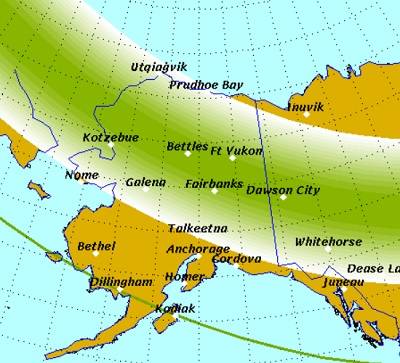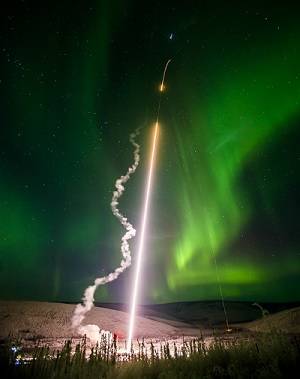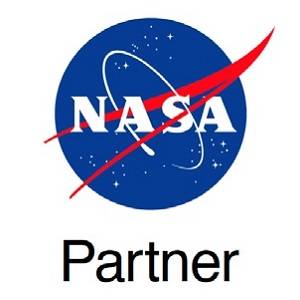Aurora Links & Resources
Learn more about the aurora with these online resources!
Note: Links open in a new window. If you use a pop-up blocker, links may not work.
If you are having trouble, disable the pop-up blocker and try the link again.
 What Is The Aurora?: Download this one-page sheet with information on what causes the aurora.
What Is The Aurora?: Download this one-page sheet with information on what causes the aurora.
Cultural Connections: The Northern Lights: Videos and online activities connecting aurora science with Iñupiat culture and language. The website also features downloadable lesson plans, Iñupiaq vocabulary pronunciation, and interviews with elders.
Geophysical Institute Aurora Forecast: Check the forecast to see if the aurora will be visible in Alaska during the next few nights.
Aurora Tracker: Predict your chances of seeing the aurora in six locations around Fairbanks.
 Poker Flat Research Range: Learn about the world's only scientific rocket launching facility owned by a university!
Discover how scientists at Poker Flat launch rockets to study the aurora.
Poker Flat Research Range: Learn about the world's only scientific rocket launching facility owned by a university!
Discover how scientists at Poker Flat launch rockets to study the aurora.
Live All-Sky Camera: This camera shows the view from Poker Flat Research Range in real time, offering dramatic views of the aurora.
Aurorasaurus: Help track the aurora by reporting sightings with this citizen scientist project.
What Is An Aurora?: Kid-friendly explanation of the aurora, from NASA Space Place.
Mystery of Purple Lights: Read about how NASA solved an aurora-related mystery with help from citizen scientists.
The Mystery of the Aurora: Short video about how NASA is studying the aurora.
A Physicist Explains The Shimmering Science Behind Auroras: Read an interview with aurora scientist Liz MacDonald.
Images (Top to Bottom): Geophysical Institute Aurora Forecast, rocket launch at Poker Flat (UAF photo by
Todd Paris, 2015).
Return to Aurora homepage.

This project was funded under NASA cooperative agreement NNX16AL65A and cooperative agreement number NNH15ZDA004C. Any opinions, findings, and conclusions or recommendations expressed in this material are those of the author(s) and do not necessarily reflect the views of the National Aeronautics and Space Administration.
